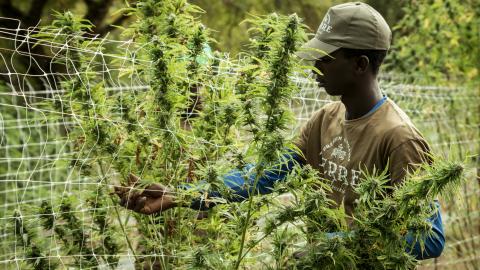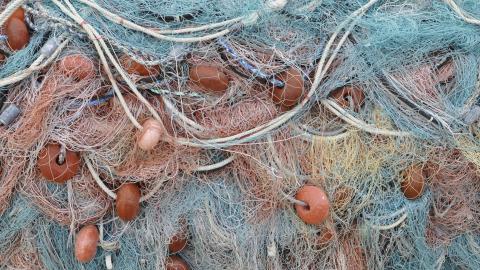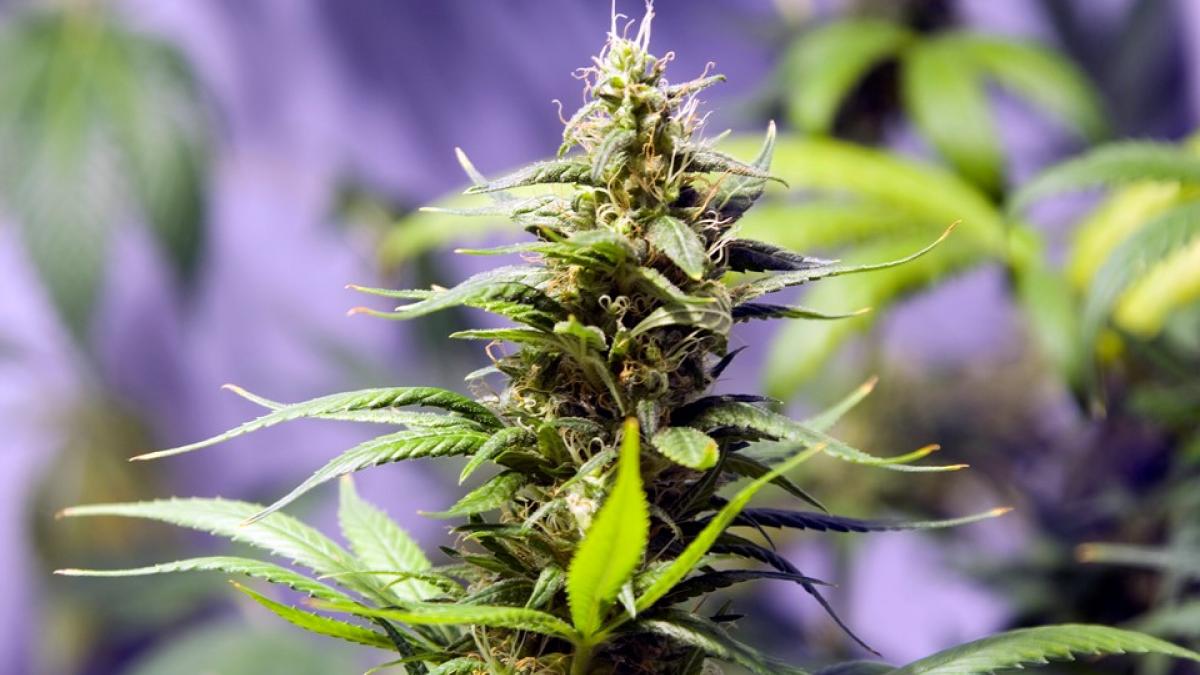
 Over-exposure to UV light is widely known to cause skin cancer, premature aging, immune system suppression, and eye damage. What many workers and employers in cannabis growing don't know, is that they may be exposed to harmful amounts of UV light on the job.
Over-exposure to UV light is widely known to cause skin cancer, premature aging, immune system suppression, and eye damage. What many workers and employers in cannabis growing don't know, is that they may be exposed to harmful amounts of UV light on the job.
A recent study conducted by a team of University of Washington researchers, in the Department of Environmental and Occupational Health Sciences (DEOHS), investigated the question of whether workers in both indoor and outdoor cannabis growing operations may be receiving harmful doses of UV exposure during their 8-hour work shifts.
With funding from the State of Washington, Department of Labor and Industries, Safety and Health Investment Projects (SHIP), PhD student Max Chmielinski and DEOHS professor, Dr. Christopher Simpson, measured the levels of UV light workers in both indoor and outdoor facilities in Washington State were exposed to on the job. Facility employees wore sensors while performing regular job duties to measure their potential levels of UV exposure over a typical 8-hour shift.

Upon analysis of the data, Max and Dr. Simpson found that workers in both types of facilities were potentially receiving harmful doses of UV light over their 8-hour shifts, which could result in serious health affects.
How can people working indoors be exposed to high levels of UV light you ask? Light bulbs!
The data shows that light bulbs used in indoor grow facilities can emit dangerous levels of UV light, especially when workers are exposed for long periods of time or work in close proximity to the bulbs. The amount of UV measured varies across the types of bulbs used in a given facility.

UV-C lamps in particular, often referred to as germicidal lamps or bulbs, were found to cause effective UV light exposures that exceed the Washington State Division of Occupational Safety (DOSH) permissible exposure limit (PEL) for an 8-hour work shift by over 300,000%.
The figure below shows the average dose of effective UV light over an 8-hour shift from 5 different bulb types commonly used in growing facilities in comparison to the DOSH PEL. Dose is measured at 3ft away from the bulbs.

While the measurements for germicidal bulbs in particular sound scary, there are many things employers and workers can do to prevent harmful exposures from happening, and protect their health. DEOHS researchers recommend employers take the following steps to keep their employees safe:
- Choose grow lamps with lower UV intensities.
- Position all light bulbs higher than 8ft off the ground.
- Train all employees on how to take proper safety precautions with all bulbs.
- NEVER use germicidal bulbs when workers are present. Rooms containing germicidal bulbs should be interlocked to prevent access while lamps are on.
- Display warning signs in areas where UV-emitting bulbs are used.
- Provide protective eye-wear appropriate for the specific wavelengths emitted by the bulbs in your facility.
Workers in indoor facilities can take steps to protect their health as well, including:
- Ask your employer about UV light hazards and controls in your workplace.
- Always leave 3ft of space between yourself and any UV-emitting bulb.
- Wear protective eye-wear appropriate for the specific wavelengths emitted by bulbs in your workplace (ask your employer if you aren't sure!).
- NEVER enter a space where germicidal bulbs are in use. ALWAYS make sure germicidal bulbs are switched off before entering.
- Wear long sleeved shirts to reduce skin exposure to UV.
- Adhere to all displayed warning signs.
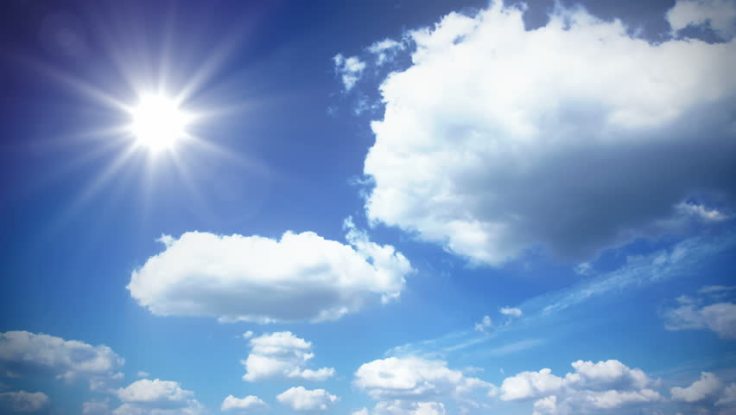
When it comes to outdoor facilities, the culprit of the UV light over-exposure is much more obvious - the sun! Lara Kaminsky, Executive Director of The Cannabis Alliance says, "workers in outdoor cannabis growing facilities should be receiving the same training, and using the same protections, as any other outdoor agriculture workers when it comes to sun protection and heat safety."
As in any other outdoor agriculture workplace, there are precautions employers and workers can take to prevent harmful over-exposures.
 DEOHS researchers suggest that outdoor agriculture workers wear long sleeved, UV-protective t-shirts, which were shown in their study to protect against harmful skin exposures. UV-protective eye-wear and wide brimmed hats (not baseball caps) are also recommended when working outdoors, and a sunscreen with an SPF of 15 or higher should be applied throughout the day to protect any exposed skin.
DEOHS researchers suggest that outdoor agriculture workers wear long sleeved, UV-protective t-shirts, which were shown in their study to protect against harmful skin exposures. UV-protective eye-wear and wide brimmed hats (not baseball caps) are also recommended when working outdoors, and a sunscreen with an SPF of 15 or higher should be applied throughout the day to protect any exposed skin.
Because outdoor agriculture workers are encouraged to wear full coverage clothing to protect against the sun, it is very important to emphasize the need for hydration, rest, and shade throughout the day to prevent heat-related illness.
It is also important to remember that UV-exposure can occur even when the sky is cloudy, so it is always best to check the UV-index each day to determine the level of risk. On days when the UV-index is high, it is recommended that outdoor work be avoided during mid-day to minimize harmful exposures. Putting workers on rotating shifts during sunny summer months, and providing plenty of shady spaces for frequent breaks, can also help reduce health risks. 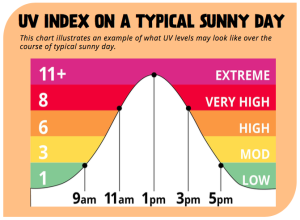
Now that the data is in, the DEOHS team has put together a series of fact sheets intended to educate workers and employers in cannabis grow facilities about harmful UV light exposures in their industry, and best practices for protecting worker health and safety. The Department of Environmental and Occupational Health Sciences, Washington State L&I, and The Cannabis Alliance hope to "shine a light on safety" in this rapidly growing industry.
 Download the "Shine a Light on Safety" fact sheet series HERE.
Download the "Shine a Light on Safety" fact sheet series HERE.
For more information on health and safety in the commercial cannabis industry, please visit the Washington State L&I website.


